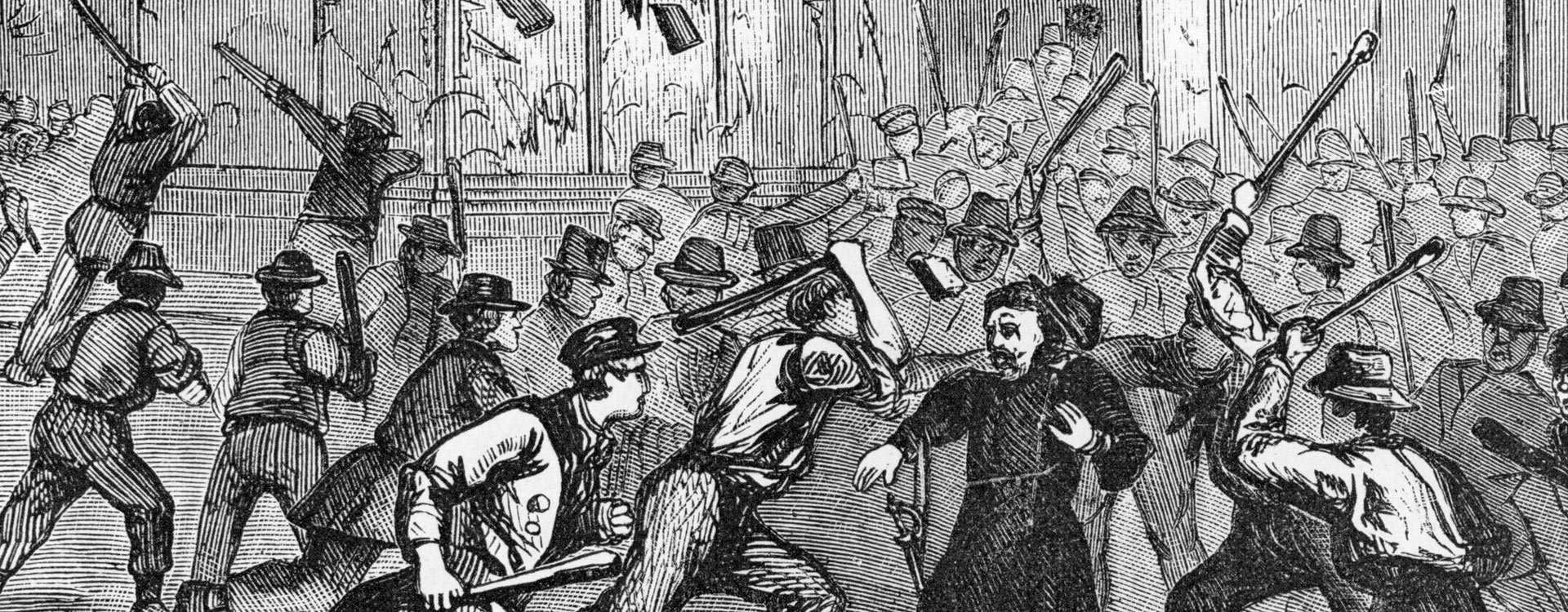Moonshine, as we know it, hasn’t been moonshine for very long. It started in England as a word to describe any work done at night by the light of the moon and wouldn’t describe illegal liquor until the late 1800s. The practice of distilling moonshine also didn’t start as a violent endeavor, though violence quickly became a part of the identity of moonshiners. They were a big part of the early American Revolution and Civil War tax conflicts helped shape them into the loose organization we’re more familiar with, but they didn’t become true “moonshiners” until Prohibition.
It’s also interesting to note that producing moonshine wasn’t illegal until Prohibition. That’s a good two hundred year swath of American history where the mountain drink the feds loved to hate was perfectly legal. As with most issues in the US, taxes were the core of the conflict. You could make and drink as much as you wanted, but as soon as you tried to sell it, that’s where things got dicey.
So in light of the recent popular resurgence moonshine’s enjoying, here’s where moonshine was through American history.
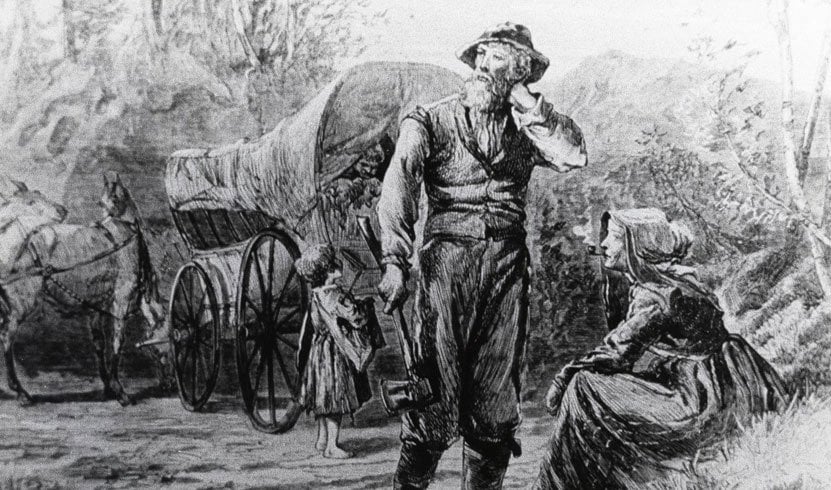
Origins in Immigration
In the years just before the Revolution, a massive influx of Scotch-Irish migrants moved from the northern Irish counties to the English colonies in North America. They weren’t the only immigrants, since the Germans were making their way over in large numbers as well, but there were absolutely differences between the groups. About the migrants of the time, they said, “When the English would arrive in the new world, the first thing they would do would be to build a church, the Germans would build a barn, but the Scotch-Irish would build a whiskey still.”
To colonial Americans, being Scotch-Irish wasn’t much better than being just plain Irish. Yeah, it’s good that they were Protestant, but that didn’t go too far in redeeming them as a group. Established colonists were, to put it lightly, reluctant to have them around. As a result, the Scots settled on the edge of the English colonies in the isolation of the Appalachian Mountains. They rebuilt their lives, continuing their Scottish twist on old Ulster culture. Lucky for us, that culture included an almost rabid love of liquor and the distilling expertise to validate that love.
Their lives in the Appalachians were based mostly on subsistence farming and what little money they needed they either obtained selling their spirits. Or they cut out the middle man completely and made whiskey their currency. Because they lived in isolation and were fueled mostly by homemade whiskey and emotional instability, they got a reputation for being drinkers and brawlers, which would come in handy not long after they arrived in the colonies.
It must take a long time to forget you hate the English, because, during the Revolution, the descendants of those early immigrants came down hard on the invading army. They claimed one of the earliest victories of the war, killing hundreds of British troops, including a general, and winning high praise from Washington himself. They were a significant force in a war that, early on, significantly lacked significant forces.
They would stay a significant force in the early years of the constitutional United States and, in true Scots-Irish fashion, cause fairly significant problems for the fledgling government.
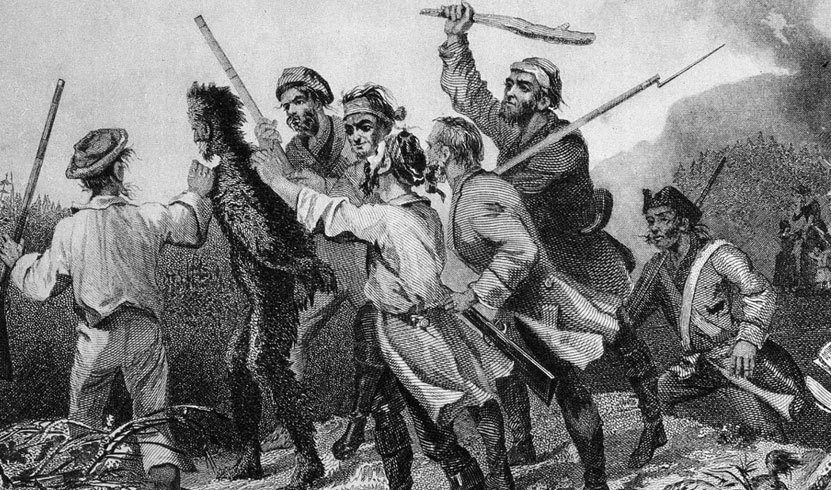
Whiskey Rebellion
The goodwill the Scotch-Irish built didn’t last long though. For a newly begotten country, the Revolution was an expensive outing and the new republic needed money. Despite the Revolution’s impetus being taxes and no one liking them, Congress decided it needed to make a quick buck. In 1791 Treasury Secretary Hamilton instituted an excise tax on liquor, jacking up the price of whiskey. Appalachian distillers in western Pennsylvania hated the tax almost as much as they’d hated the English and so began the Whiskey Rebellion.
In true American fashion, the rebels began tarring and feathering any tax collector brave/stupid enough to wander up the mountains hoping to collect, their resistance based on the belief it was a tax that disproportionately affected small farmers and citizens on the frontier. Eventually that resistance coagulated into an actual occupying force rather than sporadic violence when a rebel force attacked and destroyed a tax inspectors home in 1794. Imagine if Occupy Wall Street had actually taken over New York City and burned down Goldman Sachs, rather than just inconveniencing the NYPD in a few parks. Overall, the occupation wasn’t a great sign for an experimental constitutional government like the early United States.
Hamilton wanted a military response, which Washington agreed to after negotiations broke down. With Washington, Hamilton, and Virginia governor Henry Lee at the head, 13,000 federal troops marched into western Pennsylvania, ready to face a violent insurrection.
Now, if you’re expecting an epic, months-long struggle between valiant freedom fighters and an oppressive, tax loving government, we had that one already. Overall, as awesome and completely livable as a country founded on freewheeling and unregulated whiskey distillation and consumption sounds, be glad the American Revolution was the only successful rebellion of the late 1700s, because had the Whiskey Rebellion turned into a hostile military conflict, it’s unlikely the Constitution’s brand of democratic republicanism would have survived long. By the time the federal force reached Pittsburgh, the rebels had dispersed and the Whiskey Rebellion was over.
Don’t worry though, there is a happy ending here for whiskey. There were only two convictions after the rebellion and both were pardoned by Washington. The tax was also repealed by Jefferson a few years later, so the rebels, and the Scotch-Irish, were back to pretty much where they’d been during the Revolution.
It wasn’t the end of the conflict between the federal government and whiskey distillers, but there was a bit of a lull. Taxes came and went while moonshiners kept trying to find ways to get around them. But then we come to the Civil War.
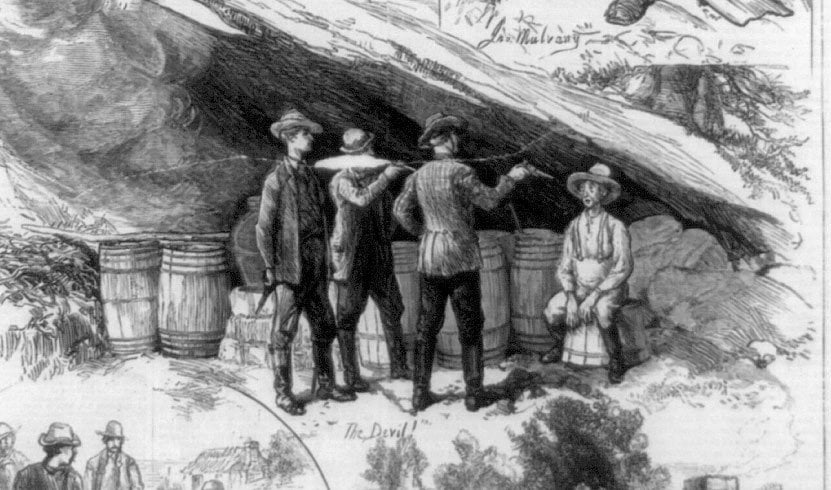
Civil War Tax Conflict
The government knew the Civil War was going to be expensive at about the same time people figure out other wars are going to be expensive. Namely, when it’s not over by whatever holiday was closest. To offset the cost of the war, Congress established the Internal Revenue Service, who was tasked with collecting taxes on luxuries, including liquor and tobacco. Which is admittedly a far more badass origin story for the IRS than we thought they’d have.
Like we said earlier, the production of moonshine still wasn’t illegal, even a hundred years after the Whiskey Rebellion. The illegal thing was not paying the taxes on the spirits. And a whole bunch of people not paying taxes was the reason that active patrols resumed in the Appalachian Mountains in the 1870s.
Now, before the war, distillers were seen as farmers who were trying to make a little extra cash selling something everyone wanted. During and after the war, public perception started to shift to a more favorable opinion of the federal government and the agents, the revenuers, it sent after the moonshiners. This shift happened because, especially in northern Georgia, there was a sustained conflict over taxes and the conflict got a lot of coverage in the press. It’s one of the first times illegal liquor gang mentality and tactics popped up, a mentality that would absolutely carry on through Prohibition and beyond.
Moonshiners not only violently clashed with agents trying to enforce the law, but they went after locals who were or were thought to be helping revenuers find the lawbreakers. By the 1870s, the ever-present authorities on good judgement and reasoned thinking, the Ku Klux Klan, joined the fray on the side of the moonshiners. Rule of thumb, if the KKK’s on your side, reevaluate your side.
This is where the modern meaning of “moonshine” really took hold. With the federal government cracking down on the illegal distribution of alcohol, distillers were made nocturnal. Their activities were done by the light of the moon and because people are rarely creative when it comes time to nickname criminals, the term “moonshiner” was born.
Consumption’s never been illegal, by the way, even during Prohibition. The wording of the laws has always forbade tax evasion or production, never the act of drinking.
By the 1880s, public opinion shifted so much that the temperance movement actually began to get some traction. Probably, and we’re just guessing here, if the moonshiners hadn’t been such dicks about killing federal agents and not paying taxes, the taxes would have gone the same way as those that led to the Whiskey Rebellion. The taxes weren’t really supported by the public in the first place and the moonshiners could’ve kept right on shinin’ with only a brief interruption in their otherwise favorable industry. Instead, they started shootouts and ratted each other out, because when you have a good thing going, it’s just a matter of time before you ruin it yourself.
Speaking of ruining things, let’s talk about Prohibition.

Prohibition
To talk about moonshine in Prohibition, we have to talk about the temperance movement. Thanks to some serious religious revivalism in the early 1800s and the moonshiners’ violent resistance to taxation, the temperance movement got real strength early on. Through public demonstrations and advertisements, the movement convinced people that alcohol was to blame for immoral behavior, violence, and the overall decline of pure American values.
But speeches and ads weren’t the only things they used to make their argument. Temperance advocates destroyed saloon windows and kegs of alcohol with a hatchet, which didn’t really do a whole lot to validate their claim about alcohol being the cause of physical violence. Unless they were drunk, in which case, maybe they weren’t there for the right reasons.
In any case, the movement built some momentum, the “noble experiment,” the 18th Amendment, was ratified. The manufacture, transport, and sale of alcohol were banned. Maybe if they knew what was coming, they wouldn’t have pushed so hard to get everyone to give up booze.
First off, bootlegging is directly to thank (or blame, depending on your view) for NASCAR and to NASCAR’s credit, they fully embrace their origins. On their official site NASCAR has a whole breakdown of exactly what happened between the 18th Amendment and their first official left turn. Basically, those Appalachian guys we’ve been talking so much about didn’t have many options for income, just as they always haven’t. Bootlegging was a choice made for them and since fancy, fast driving is something people brag about, competitions on homemade tracks started not long after. And now we have NASCAR.
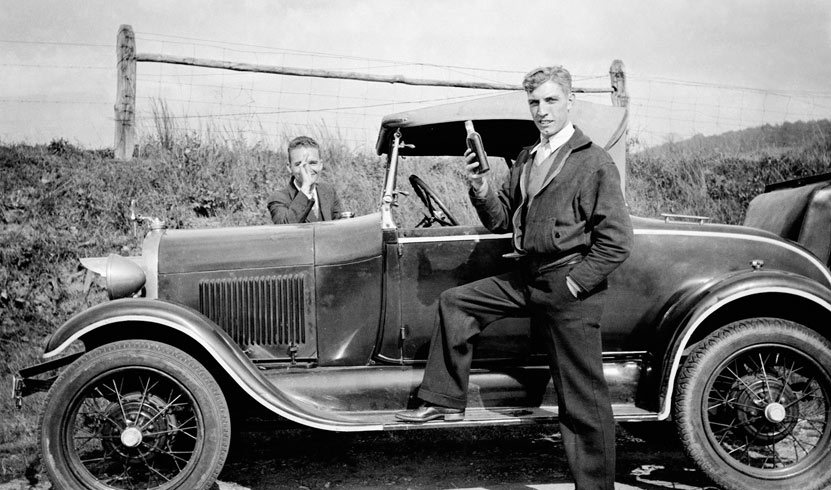
We mentioned the irony of the temperance movement and their violence, so we’ll double down. They’re at least partially responsible for one of the biggest violent crime waves in all of American history. Before Prohibition, organized crime was fairly limited in size. During and after Prohibition, organized crime exploded and so did a whole bunch of people.
The Irish and the Italians are the two biggest examples of people who benefitted from Prohibition. While the Protestant-majority United States was distracted by its local drunk Paddy, the Irish almost completely absorbed local politics and law enforcement, with emphasis on Boston and New York. It wasn’t uncommon for criminals, cops, and politicians to come from the same Irish family. They locked down virtually every part of the moonshining trade and built a criminal and political empire that took decades to even begin to fade.
For an example of Irish success during Prohibition, we only have to look at President #35. John F. Kennedy was the son of a former bootlegger, Joseph P. Kennedy, who wanted to dispel the negative reputation of Irish immigrants and Irish Americans as criminals. Missing his own point, he used mob connections to get JFK elected. Admittedly, it helped build a favorable image with society at large, but then he got greedy. His other son, Attorney General Bobby Kennedy, worsened the already violent relations between the Irish and the Italians.
The Italian involvement in Prohibition were much the same, but far more organized. Family structure and connections ensured loyalty to the brand. They never quite got the hold the Irish did over Prohibition, partially because they didn’t have the influence in the police force, but with two groups of people with deeply rooted sense of community, one tribal and one family, conflict was inevitable. Ultimately, organized Italian families outlasted haphazard Irish gangs, thought the Irish hold in politics and law enforcement continued to cause problems for the Italians.
The explosive expansion of organized crime during Prohibition didn’t stop with the 21st Amendment either. Devastating violence and drug abuse is still around, largely prompted by what the temperance movement “accomplished.”
So far, with NASCAR and unfathomable violence, moonshine’s 20th century history isn’t looking great. So let’s pile one more shitty thing on top. Thousands of people died from poison moonshine and it was mostly the fault of the government.
Prohibition only outlawed recreational alcohol. Not with those words, but that was the idea. But industrial alcohols were still a thing and with their normal sources gone, people got desperate. The stuff was dangerous enough before the government got involved, but the feds got pissed people were still getting pissed. They ordered that various poisonous substances be added to the alcohol, hoping they would serve as an added deterrent. Apparently “industrial alcohol” wasn’t enough. But the bootleggers still stole and sold it, so by Prohibition’s repeal, estimates put the number of federally sanctioned poisonings at roughly 10,000. That’s just deaths, by the way, and is a lot more people than we’re comfortable being poisoned by our government. For the record, we’re comfortable with zero.
That poison is added on top of the dangers already present in moonshine in the form of methyl alcohol. People who are good at making moonshine know how to remove or avoid it, but, and this brings us to our next thing, not everyone making moonshine is good at their job. Just like today’s pirated movies, knock-off iPhones, and payday lenders, people were trying to capitalize on ignorance and impulse spending. Just like today, those products weren’t always top quality. The difference is, today you probably won’t be killed by a bad movie download.
American whiskey’s current popularity has a lot to do with Prohibition’s repeal. People sprinted back to the authentic stuff, since a lot of alcohol in the meantime was poisonous, blinding rotgut. If they were going to die from alcohol poisoning, they were going to do it the old-fashioned way. That is, they’d drink so many Old-Fashioneds that they died. Just like Grandaddy wanted.
We’re not done yet. Moonshine’s still around and you’ve almost definitely seen its distinctive packaging on your local distributor’s shelves. There’s more to say about moonshine in 2016.
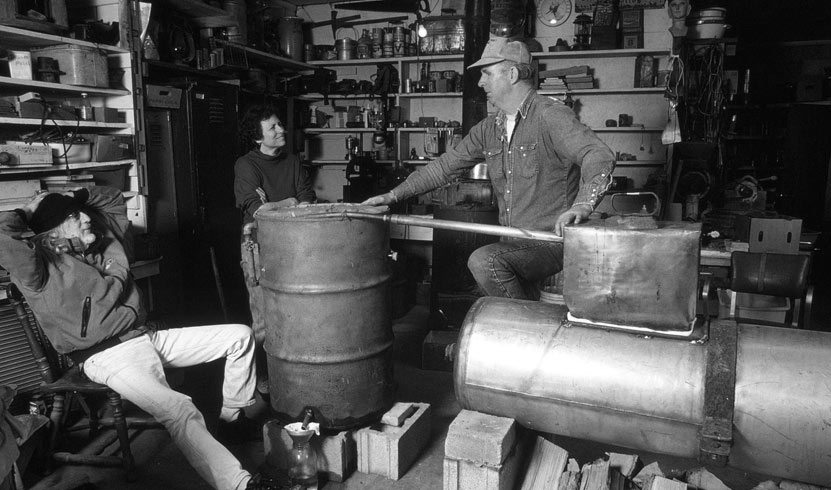
Modern Moonshine
The international market for moonshine is still killing people. In 2015, nearly a hundred people in Mumbai were killed by a bad batch of homemade moonshine, with forty-six more hospitalized. But an incident in West Bengal saw hundreds of people poisoned by illegal alcohol. One hundred sixty-eight people died and a 2008 tragedy saw up to 180 deaths in total. Nigeria’s also having some trouble with Ogogoro, their own special brand of illegal gin.
It’s still a problem in the United States, too. We’re not at Prohibition levels of illegality or prevalence, but make no mistake, you can’t go hocking “Mountain Mike’s Bathtub Magic” at the local bar. Despite that, asshole distillers sell illegal, deadly, impure alcohol to people in poor neighborhoods. Also, law enforcement is worried about the health risks rather than tax revenue now. Seems like they’re trying to make up for all the intentional poisoning they did back in the Twenties.
Interestingly, there was also a big urban shift for American moonshiners. They found it was easier to get around taxes and hide their stills on private property since law enforcement needs a search warrant to get on the premises. There’s also been a change in who does the enforcing. The IRS is no longer as badass as it once was, since busting modern moonshine falls to the Bureau of Alcohol, Tobacco, and Firearms.
Ultimately though, “moonshine” today describes the style of liquor rather than the legality of it. The moonshine you’re buying from your corner liquor store isn’t authentic, in the traditional sense. Sure, it was made the same way and it came in a mason jar, but you found it in a store. That’s really where it stops being illegal. At this point, moonshine’s pretty much another word like bourbon, scotch, cognac, or one of the thousand words for wine.
Which means Moonshiners, the show about backwoods guys hiding from the law, isn’t real. Those guys aren’t in jail for the same reason Bryan Cranston hasn’t been arrested for cooking meth. You can straight up buy the moonshine they make on the show, so everything you see on TV is pretty legal. In fact, your uncle with the wine casks in his basement is probably breaking more laws than the guys on Moonshiners.
In fact, moonshine’s so legal it’s in danger of becoming a corporate cash grab. It’s actually approaching depressing. In the same way that craft beer companies are being bought up by the truckload, moonshine’s old and storied history is slowly being edged out by larger companies looking to turn a trend into a profit. With the success of brands like Ole Smoky, Jim Beam and Jack Daniels both threw their own white whiskies on the market. Notice Jim Beam and Jack Daniels are distinctly not the names of those two guys you met on a hike who tried to sell you a triple x clay pot.
The solution here, just as it is with craft beer, is to do a bit of research before you buy. You can still enjoy an American classic, even if it’s not illegal. But for the sake of all those guys who fought the government for as long as they did, stay close to tradition and buy your moonshine from a small company. Or, and this is one hundred percent not an endorsement or legal advice, make your own. We have a sneaking suspicion that the small business guys selling legal moonshine would totally understand why you decided to build your own still and would be fine with the lost business. In fact, they might even have a few tips for you.

